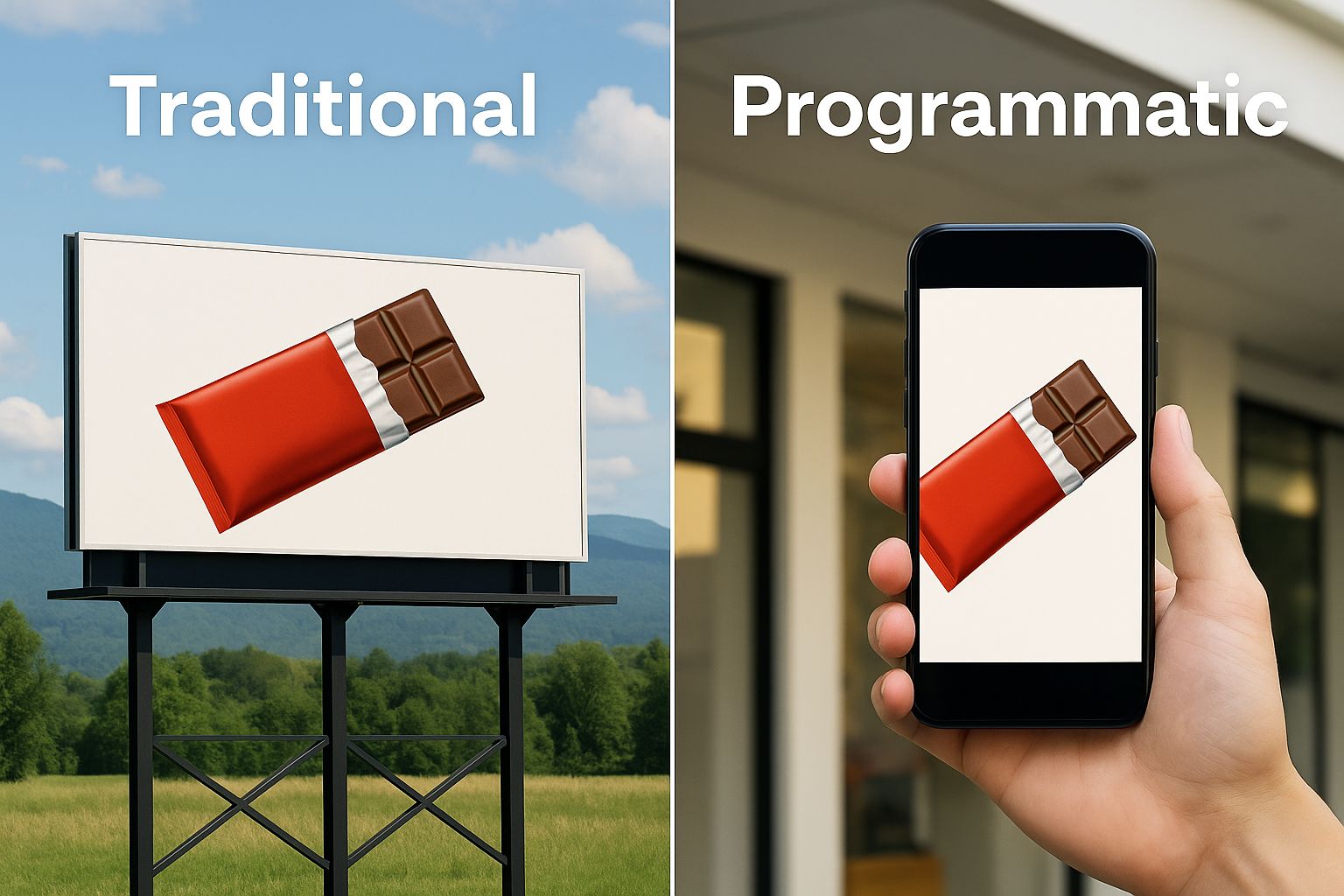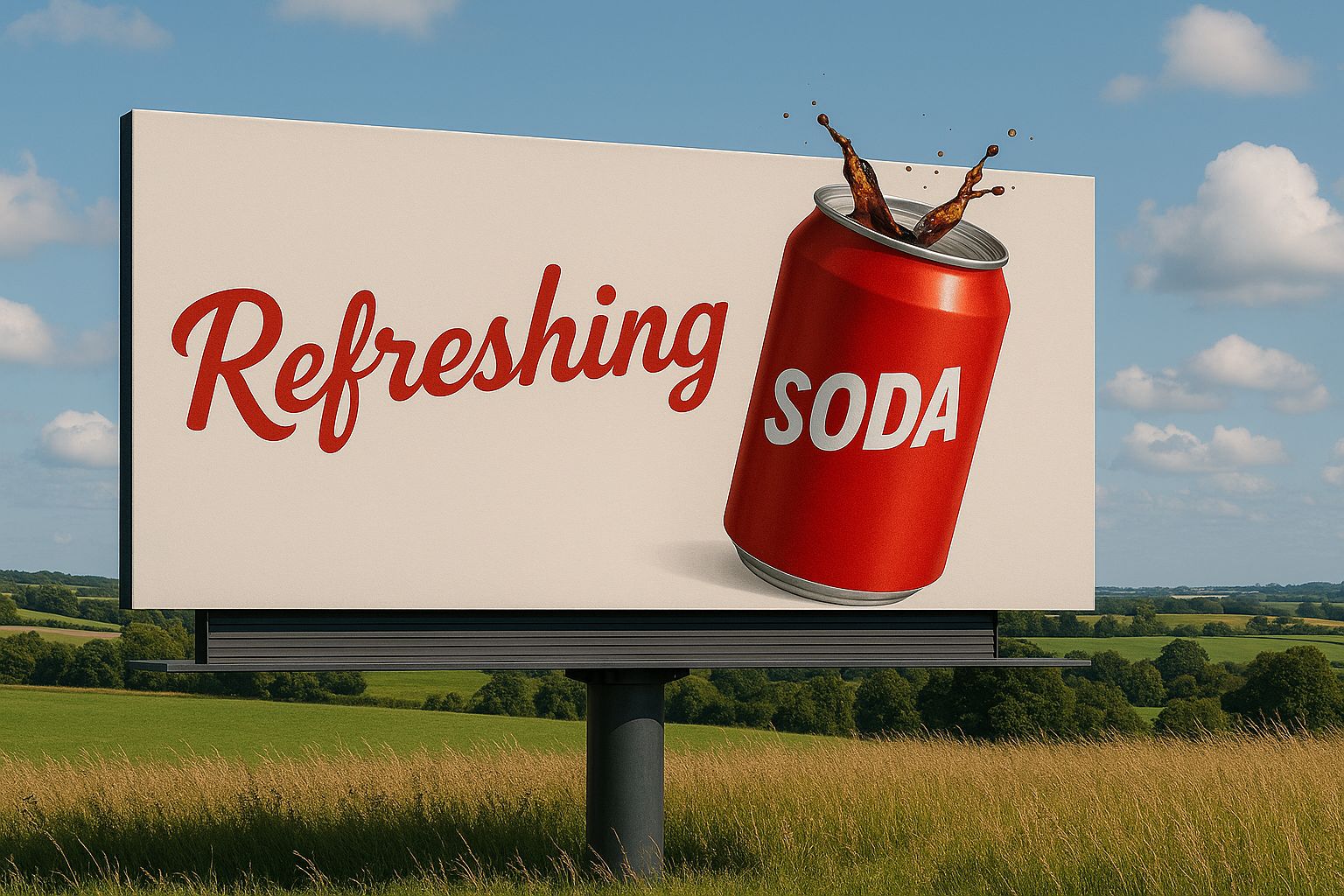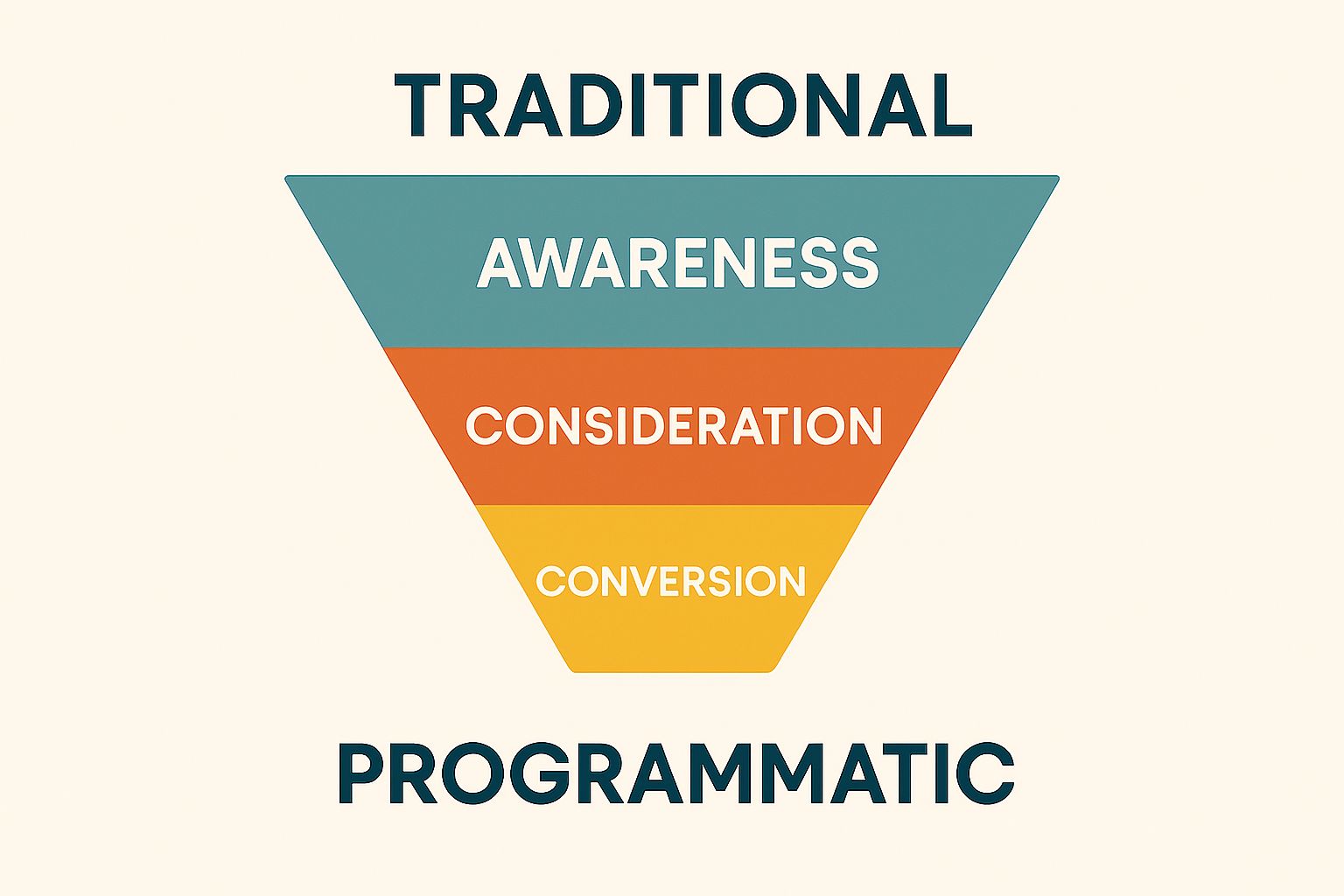
Today, nearly 91% of all U.S. digital display ad dollars are transacted programmatically.1 But what exactly is programmatic advertising? At its core, it’s the automated buying and placement of ads across digital platforms using AI and real-time bidding (RTB). For CPG brands, this means being able to reach the right shopper on the right screen at the right time, whether it’s a display ad while they scroll recipes or a video ad during a streaming break.
This tech-driven approach eliminates manual guesswork from media buying. Rather than manually selecting platforms and timing, marketers set parameters such as target audience, budget, and KPIs, and let algorithms place ads across a network. It allows for precision that traditional methods can rarely match.
CPG marketers often operate on tight margins, with short product life cycles and seasonal fluctuations. Programmatic ads offer the flexibility to launch fast, test creative variations, and double down on what works, all without waiting for the next media cycle.
For CPG advertisers, the top two reported benefits are targeting precision and overall campaign efficiency.2 Want to reach busy moms who just purchased paper towels at a local retailer? Programmatic tech can do that. Looking to retarget someone who viewed your product page but didn’t buy? It handles that, too.
Programmatic platforms also provide real-time metrics. Instead of waiting weeks for a TV campaign recap, you can see performance daily and optimize in-flight. This adaptability is crucial for brands that need to pivot quickly or operate across multiple SKUs.

Despite the digital boom, traditional advertising remains a powerful force. Think about the last big CPG product launch you saw. Was it on a billboard? A commercial during a major event? Traditional ads excel at reaching broad audiences quickly.
Traditional channels, such as TV, still play a significant role in building top-of-funnel awareness and long-term brand recall.3 They are unmatched when a brand wants mass exposure fast, like during a national rollout or seasonal promotion. CPG brands like Coca-Cola and Procter & Gamble still invest heavily in TV, radio, print, and out-of-home for that reason.
However, the downside is the cost and lag in feedback. You can’t pause a billboard in real-time or see exactly how many people converted after watching a TV ad. And personalization? Forget it. Everyone sees the same message.
Here’s where strategy matters. CPG brands don’t need to choose one or the other. In fact, integrated campaigns using both digital and traditional media can generate up to 52% higher brand lift than single-channel efforts.4
Use traditional ads for broad market awareness and building brand equity. Use programmatic to reinforce the message with personalized follow-ups, geo-targeted coupons, and retargeting.
Example: Launching a new snack bar? Run national TV and OOH ads to build hype, then use programmatic to retarget audiences who saw the ad and visited your product page but didn’t purchase.

Your advertising mix should reflect your product’s life cycle, target audience, and campaign goals. Programmatic offers agility and targeting that modern CPG marketers can’t ignore. But old-school advertising still plays a vital role in brand storytelling.
Pairing both channels lets your brand drive awareness, build trust, and push conversion in a coordinated way. That’s how CPG brands win today.
For more strategies and trends, check out more of our blog posts.
1. eMarketer, “US Programmatic Digital Display Ad Spending,” 2023. https://www.emarketer.com/
2. Statista, “CPG Marketers’ Top Programmatic Advertising Benefits,” 2023. https://www.statista.com/
3. Nielsen, “TV Still Key for Brand Recall in CPG,” 2022. https://www.nielsen.com/
4. IAB, “Cross-Media Advertising Effectiveness Report,” 2023. https://www.iab.com/